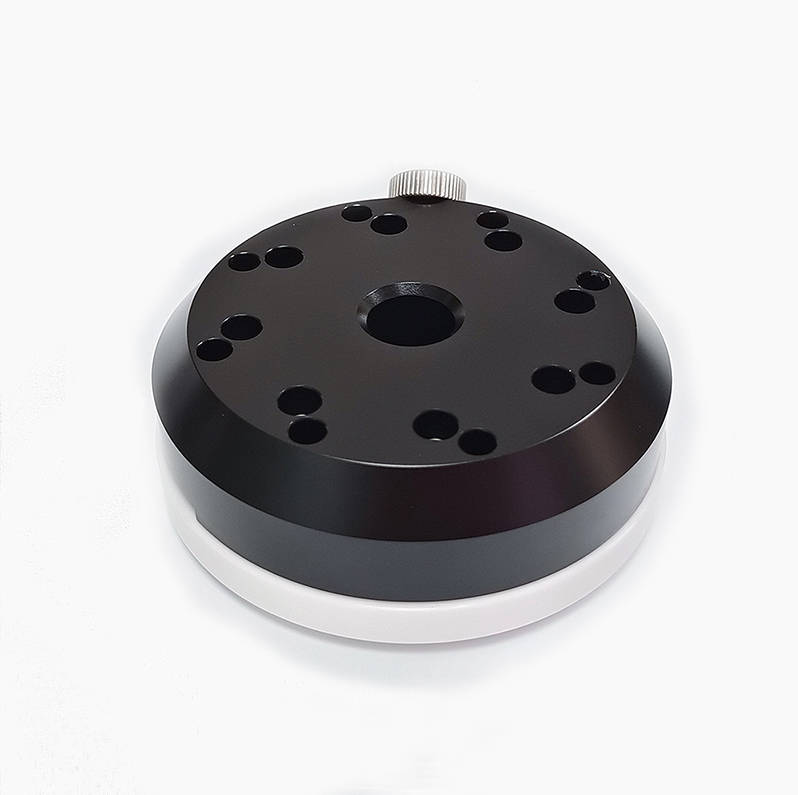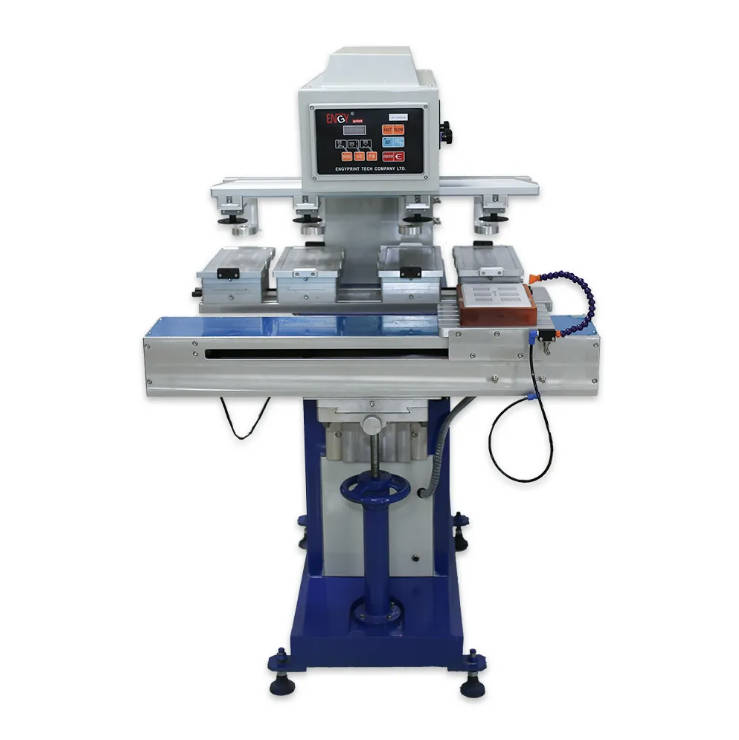Introduction
Pad printing, a versatile printing technique, has become increasingly popular across various industries due to its ability to produce high-quality prints on irregular surfaces. This article will delve into the intricacies of how the pad printing process ensures exceptional results on uneven surfaces, addressing the concerns of potential buyers considering the purchase of a pad printing machine.

Understanding Pad Printing
Definition of Pad Printing
Pad printing is a unique printing process that involves transferring ink from a plate (also known as a cliché) to a silicone pad, which then transfers the image onto the desired surface. This technique allows for precise and detailed prints on a wide range of materials, making it a popular choice for industries such as automotive, medical, and consumer electronics.
The Mechanism of Pad Printing
The pad printing process begins with the creation of a printing plate, which is engraved with the desired image. The plate is then inked, and a silicone pad is used to pick up the ink from the plate’s recessed areas. As the pad presses against the surface to be printed, the ink is transferred, creating a high-quality image on the object.
The Importance of Irregular Surfaces
Common Applications
Many products feature irregular surfaces that pose challenges for traditional printing methods. For instance, toys, medical devices, and automotive parts often have complex shapes and contours. These products require a printing solution that can adapt to their unique geometries while maintaining print quality.
Challenges in Printing on Irregular Surfaces
Printing on irregular surfaces presents several challenges, including ensuring proper ink adhesion, achieving full coverage, and reproducing intricate details. Conventional printing techniques may struggle with these issues, leading to poor-quality prints that can impact the product’s overall appearance and functionality.
How Pad Printing Achieves High Quality on Irregular Surfaces
The Role of the Silicone Pad
One of the key advantages of the pad printing machine is the silicone pad’s flexibility and adaptability. The pad can conform to the contours of the surface being printed, allowing for even ink distribution and consistent coverage. This unique characteristic enables pad printing to achieve high-quality results on various shapes, including those that are curved or textured.
Ink Transfer Mechanism
The ink transfer mechanism is crucial for ensuring high-quality prints. The silicone pad picks up ink from the engraved plate and transfers it to the surface with precision. The viscosity and formulation of the ink play a significant role in this process. Using the right pad printing supplies, such as specially formulated inks, can enhance the print’s durability and appearance, ensuring that it adheres well to the surface.
Precision and Detail
Pad printing is renowned for its ability to maintain fine details and sharp edges. The combination of the silicone pad’s flexibility and the precision of the engraving process allows for accurate reproduction of intricate designs. Compared to other printing methods, such as screen printing, pad printing excels in producing detailed images, making it an ideal choice for applications requiring high fidelity.
Key Factors Influencing Print Quality
Pad Design and Material
The design and material of the silicone pad significantly influence print quality. Different types of pads are available, each suited for specific applications. For instance, softer pads may be used for uneven surfaces, while firmer pads are better for flat surfaces. Selecting the right pad is essential for achieving optimal results.
Ink Selection
Choosing the right ink is critical for successful pad printing. Various types of inks are available, including solvent-based, water-based, and UV-curable inks. Each type has its own set of properties, making it suitable for different materials. Ensuring ink compatibility with the surface being printed on is vital for achieving high-quality prints.
Machine Settings and Calibration
Proper machine setup is essential for consistent print quality. Factors such as pressure, speed, and alignment must be meticulously calibrated to ensure optimal performance. An automatic pad printing machine can simplify this process, allowing for precise adjustments and consistent results across production runs.
Best Practices for Ensuring High-Quality Prints
Regular Maintenance and Calibration
To achieve consistent high-quality prints, regular maintenance of the pad printing machine is crucial. This includes cleaning the pads and plates, checking ink viscosity, and calibrating the machine settings. A well-maintained machine will produce better results and have a longer lifespan.
Testing and Prototyping
Before full-scale production, conducting tests on sample surfaces is advisable. Prototyping allows businesses to identify any potential issues and make necessary adjustments to the printing process. This step is essential for ensuring that the final product meets quality standards.
Training and Skill Development
Operator training is vital for optimal machine performance. Skilled operators can make informed decisions regarding ink selection, pad choice, and machine settings, leading to improved print quality. Investing in training can significantly enhance the efficiency and effectiveness of the pad printing process.
Case Studies and Success Stories
Industry Examples
Numerous industries have successfully implemented pad printing to overcome the challenges of printing on irregular surfaces. For example, a leading toy manufacturer utilized a pad printing machine to print intricate designs on uneven toy surfaces, achieving vibrant colors and fine details that enhanced the product’s appeal.
Testimonials from Users
Feedback from businesses that have adopted pad printing technology highlights its advantages. One user noted, “Switching to pad printing has allowed us to maintain high-quality standards while reducing production time. The ability to print on complex shapes has opened new opportunities for our product line.”
Conclusion
In summary, pad printing is a highly effective solution for achieving high-quality prints on irregular surfaces. Its unique mechanism, combined with the flexibility of silicone pads and the right ink selection, ensures that businesses can produce detailed and durable prints. For those considering the purchase of a pad printing machine, understanding these factors will help in making an informed decision that meets their specific printing needs.





